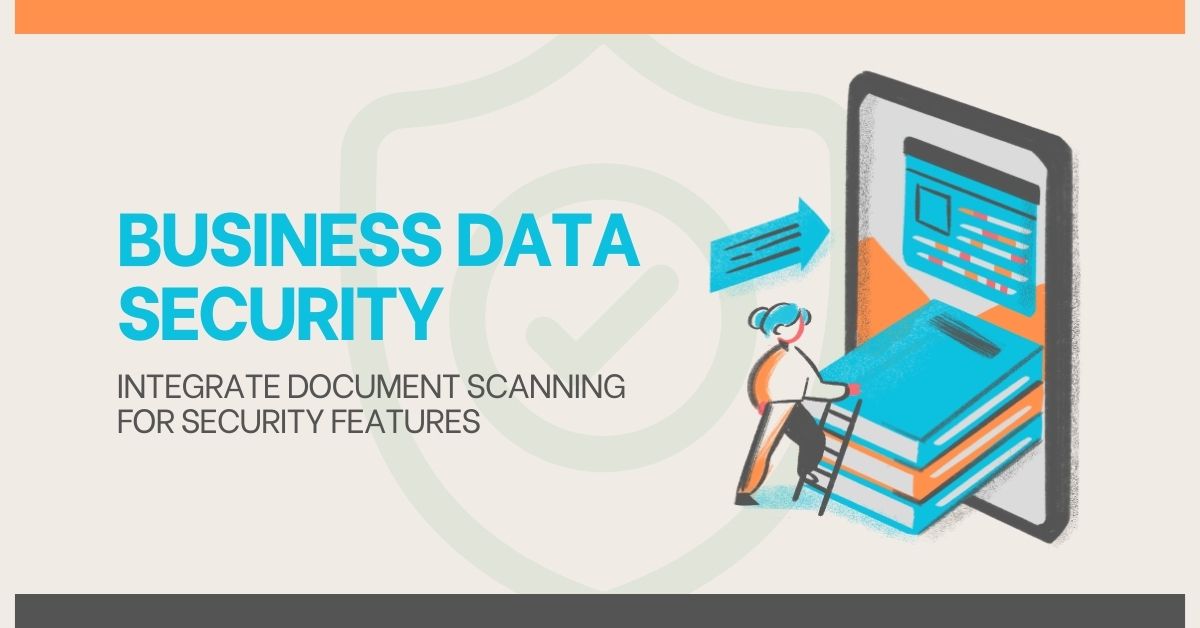How Document Scanning Can Improve Business Data Security?

Strong 8k brings an ultra-HD IPTV experience to your living room and your pocket.
In this digital era, especially after the COVID-19 pandemic, almost every aspect of institutions and businesses has been shifted online. Individuals and companies have realized the cost, labor efficiency, and consequent benefits of shifting to remote working. When things were offline, a significant hurdle for businesses was safeguarding sensitive information. Physical access to documents was a significant security threat.
However, document scanning addresses this issue. Document scanning solutions provide many security features like access control, data backup, data encryption, and more, ensuring better data security for businesses.
This article talks about the various security benefits that document scanning software provides.
Keep on reading to know more.
How Document Scanning Improves Business Data Security
Document scanning can improve business data security in the following ways:
1. Reduced Physical Access
Individuals with physical access to documents present a severe security threat, particularly in settings with many employees, guests, visitors, or contractors. You can reduce this by scanning documents and storing them digitally. This would limit the range of people who may have access to the sensitive data.
Additionally, documents go through a series of hands when they are in physical form. This elevates the risk of mishandling, misplacement, or unauthorized distribution.
With digitization in the picture, the scanned documents can be sent digitally to the authorized person. The access can also be controlled, which the article talks about below.
2. Backup and Disaster Recovery
Printed records are susceptible to being lost, stolen, or harmed due to unforeseen events, natural calamities, or deliberate activities. Conversely, digitized documents can be shielded from these threats when maintained securely.
When integrated with off-site cloud storage, digital documents can be easily backed up. If the physical office space gets damaged due to an earthquake or any other disaster, recovering a digital piece is much easier than reconstructing a physical document. A user may simply retrieve a former version of the document from the central server using any device from anywhere in the world.
3. Encryption and Enhanced Data Security
To increase the security of digital data, encryption of scanned documents is another vital approach a user could take. Using encryption algorithms, the content of a scanned document is converted into an indecipherable format. The encrypted content can only be converted back to its readable form by authorized users with the proper decryption key.
Even if someone were to gain access to confidential documents, they would not be able to understand them because of the encryption.
This feature is convenient in fintech companies and accounting firms, where fintech automation streamlines the process of verifying transactions, reducing manual intervention, and enhancing the security of scanned documents.
4. Role-based Access
After digitizing, sensitive documents can be kept in electronic archives, repositories, or document management programs. To restrict who can read, edit, modify, or share scanned documents, access controls can be introduced to these systems.
Using access controls, businesses can protect the confidentiality of these documents by ensuring that only people with adequate permissions can access them. This reduces the risk of unauthorized personnel accessing sensitive information.
5. Audit Trails
An audit trail can be defined as a chronological record of all activities and interactions related to a specific process or data. In a digitized system, this includes details such as who accessed a document, at what time, what modifications were made, etc.
This thorough record provides a clear picture of how data has been managed over time, promotes transparency and accountability, and ensures data security.
Additionally, audit trails transform into crucial tools for analysis in the event of a security incident or a data breach. They aid cybersecurity experts and law enforcement in assessing the magnitude of the breach, pinpointing the entry point, and reducing future threats by reconstructing the series of actions that led to the occurrence.
Conclusion
In essence, digitizing documents using document scanning software is a game-changer for businesses regarding data security. This transition from physical documents to scanned documents has brought many benefits, as stated above. They contribute to a more secure business environment by managing access controls, encrypting data, and allowing audit trails, among other things.
Note: IndiBlogHub features both user-submitted and editorial content. We do not verify third-party contributions. Read our Disclaimer and Privacy Policyfor details.



